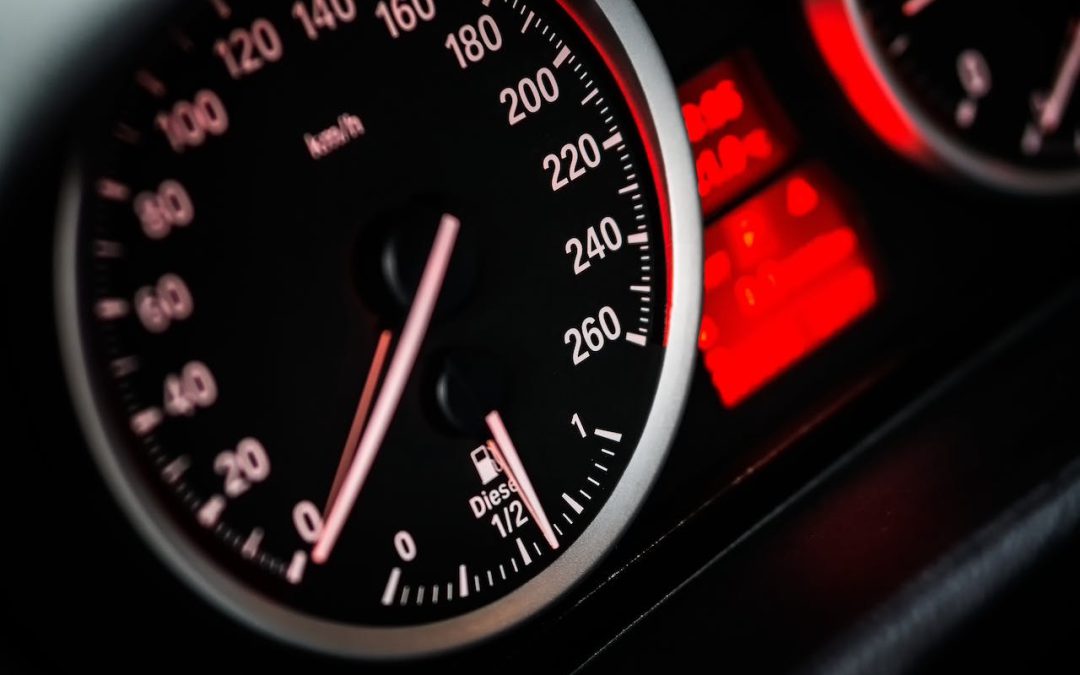Did you know that approximately 10% of vehicles fail their emissions test each year? If your car is one of them, don’t panic! In this step-by-step guide, we will walk you through what to do when your car fails its emissions test. From understanding the reasons behind the failure to taking necessary actions for a retest, we’ve got you covered.
Whether it’s replacing faulty components, seeking professional help, or exploring eco-friendly driving habits, this guide will equip you with the knowledge to tackle the situation effectively. Stay tuned to learn how to address failed emissions tests like a pro and get back on the road with a greener, more efficient vehicle.
Understanding Failed Emissions
Common Causes
- Battery disconnection can cause the vehicle’s computer to reset, leading to a failed emissions test.
- Faulty sensors, such as oxygen sensors, can result in inaccurate readings and emission levels.
- Problems with the exhaust system, like leaks or damage, can directly impact emissions output.
What a Passing Score Is
- Passing an emissions test is crucial for maintaining air quality and reducing pollution.
- There is no specific numerical score; it’s a binary pass/fail evaluation.
- Sensor functionality plays a critical role in determining whether a vehicle passes the emissions test.
Immediate Steps After Failure
Can You Keep Driving
After failing an emissions test, you cannot legally drive your car until it passes. Driving post-failure can lead to fines or even license suspension. If you do not renew registration after a failed test, you risk facing penalties.
Consider applying for a waiver if repairs are unaffordable. A waiver allows you to continue driving temporarily despite the failed emissions test. However, waivers have specific criteria and limitations.
Initial Actions to Take
Immediately after failing an emissions test, check the gas cap. A loose or damaged gas cap can cause a failure. Next, address any diagnostic trouble codes (DTCs) indicated by the check engine light.
It is crucial to promptly address the root cause of the failure. Ignoring the issue can lead to more severe problems and potentially higher repair costs.
Diagnosing the Problem
Professional Inspection
Mechanics possess expertise in diagnosing emission-related issues accurately, ensuring a precise diagnosis of the problem. Seeking a professional inspection offers reliable insights into the root cause of the emissions test failure. The comprehensive diagnostic test conducted by professionals can reveal hidden problems within the OBD system.
Identifying Issues
To identify specific issues causing the emissions test failure, start by examining crucial components like the catalytic converter and sensors. These parts play a vital role in ensuring emissions compliance. When troubleshooting, pay close attention to the “check engine” light as it serves as an essential indicator of potential problems.
Repair and Maintenance
Fixing the Problems
To address emission-related issues, repairing the exhaust system is crucial. This involves fixing leaks and replacing damaged components. Resetting the “check engine” light after repairs is essential. Consulting a mechanic ensures accurate diagnosis and effective repairs.
Taking action promptly on necessary repairs can prevent further damage to your vehicle’s emission system. By addressing issues like faulty oxygen sensors or malfunctioning catalytic converters, you can improve your car’s emission performance. Seeking a repair waiver may be an option in some cases.
- Seek professional services for complex repairs
- Ensure proper installation of new parts
- Check if your car model year affects repair options
Regular Maintenance Tips
For preventing emissions test failures, timely maintenance is key. Routine oil changes help maintain engine efficiency and reduce harmful emissions. Replacing the air filter regularly ensures optimal air-fuel mixture for combustion.
Regular maintenance not only keeps your car running smoothly but also plays a significant role in reducing harmful emissions. Neglecting basic maintenance tasks can lead to increased levels of pollutants emitted by your vehicle.
- Change oil every 3,000 to 5,000 miles
- Replace air filters every 12,000 to 15,000 miles
- Use fuel-efficient driving techniques to reduce emissions
Preparing for Retest
Necessary Steps
Before a retest, it is crucial to address the reasons for the initial failure. This involves consulting with a certified mechanic to pinpoint and rectify the emission system issues. Taking this proactive step ensures that the root cause of the failure is effectively resolved, increasing the chances of passing the retest successfully.
To adequately prepare for the retest, make sure to thoroughly review the results from the initial test. By understanding which emissions were out of compliance, you can focus on addressing those specific areas. Ensure that all necessary repairs and adjustments are made before scheduling the retest to avoid any delays in obtaining a passing result.
Timing for Retest
When it comes to scheduling a retest, timing is key. It is essential to address any issues promptly to allow sufficient time for repairs and adjustments before the deadline for registration renewal approaches. Failing to pass the retest in time could lead to registration renewal problems and potential fines or penalties.
To avoid last-minute stress and complications, aim to schedule the retest as soon as possible after identifying and resolving the initial failure reasons. Acting promptly not only allows for ample time for any necessary repairs but also helps prevent any unforeseen obstacles that may arise during the process. Remember, timely action is crucial for a smooth retesting experience and ensuring compliance with emission regulations.
Passing the Retest
Ensuring Success
To increase the chances of passing the retest, thoroughly inspect your vehicle for any issues. Consider common fixes like exhaust repairs and sensor replacements. Make sure all repairs are done by a certified mechanic to ensure accuracy.
Carry out a comprehensive inspection to identify any potential problems that could lead to another failure. Addressing these issues promptly will help in passing the retest without any hiccups. Remember, even minor fixes can have a significant impact on emissions levels.
- Thoroughly inspect the vehicle
- Consider exhaust repairs and sensor replacements
- Ensure all repairs are done by a certified mechanic
After Passing
After successfully passing the emissions test, it’s crucial to prioritize maintaining your vehicle’s emission system. Regular check-ups and maintenance will help prevent future failures and keep your car running efficiently.
Maintaining your vehicle’s emission system is essential not just for compliance but also for reducing harmful pollutants released into the environment. Schedule regular check-ups with your mechanic to ensure everything is in proper working order.
- Prioritize maintaining the emission system
- Schedule regular check-ups with a mechanic

If You Fail Again
Understanding Options
If your car fails the emissions test twice, you have a few options to consider. One possibility is applying for a waiver, especially if you are facing economic hardship. The Department of Motor Vehicles (DMV) plays a crucial role in granting waivers for repair costs.
When faced with a second failed emissions test, seeking a waiver becomes essential. This process involves applying for a waiver, particularly if financial constraints are a concern. Understanding the criteria for waiver eligibility is crucial before proceeding with the application.
Seeking Waivers
To seek waivers for emissions test failures, follow these steps carefully. Start by understanding the procedure required to apply for a waiver due to economic limitations. It’s vital to grasp the significance of meeting the specific criteria set by authorities to qualify for a waiver.
Long-term Strategies
Ongoing Maintenance
Regular maintenance is key to ensuring your vehicle passes emissions tests consistently. Frequent tune-ups and oil changes help maintain emission system efficiency.
To maintain emission system health, regularly check the air filter, spark plugs, and oxygen sensors. These components play a crucial role in emissions control.
Periodic inspections by a qualified mechanic are essential to detect potential issues early on. Timely repairs can prevent costly failures during future emissions tests.
Avoiding Future Failures
Preventive measures such as using high-quality fuel and adhering to regular maintenance schedules can significantly reduce the chances of failing emissions tests.
Regular maintenance not only ensures smooth operation but also helps in identifying and rectifying any potential issues before they escalate.
Promptly addressing any warning lights or unusual noises can prevent minor problems from turning into major failures during emissions testing.
Final Remarks
You now have a clear roadmap for tackling a failed emissions test. Understanding the reasons behind the failure, taking immediate action, diagnosing and fixing the issue, preparing for the retest, and implementing long-term strategies are all crucial steps in this process. By following these guidelines diligently, you increase your chances of passing the retest successfully and ensuring your vehicle meets emission standards. Remember, regular maintenance and prompt attention to any issues can prevent future failures. Stay proactive to keep your car running smoothly and environmentally friendly.
Take charge of your vehicle’s emissions performance by applying these steps. Your commitment to maintaining a clean-running car not only benefits the environment but also ensures your vehicle’s longevity and efficiency. Keep up with regular inspections and repairs to drive with confidence and reduce harmful emissions.
Frequently Asked Questions
1. What causes a car to fail its emissions test?
When a car fails an emissions test, it is usually due to issues with the exhaust system, fuel system, or catalytic converter. Common culprits include faulty oxygen sensors, spark plugs, or a malfunctioning engine control module.
2. How can I prepare for an emissions test retest?
To increase your chances of passing a retest, ensure your vehicle is properly maintained. Address any identified issues promptly, drive at highway speeds before the test, and keep your gas tank at least half full. Follow the steps outlined in the blog post for a comprehensive guide.
3. What immediate steps should I take after my car fails an emissions test?
After failing an emissions test, avoid driving aggressively and reduce your vehicle’s workload. Check for simple issues like loose gas caps and address them. Follow the guidelines in the blog post to understand what to do next and how to proceed with diagnosing and fixing the problem.
4. Are there long-term strategies to prevent failing future emissions tests?
Regular maintenance is key to preventing future failures. Keep up with scheduled tune-ups, oil changes, and inspections. Use high-quality fuel and follow manufacturer recommendations for maintenance intervals. Consider investing in an emissions-friendly vehicle for better long-term results.
5. What if my car fails the emissions test multiple times?
If your car continues to fail emissions tests despite repairs and maintenance efforts, consult with a qualified mechanic or emission specialist. They can conduct a thorough diagnosis and suggest advanced repair options or alternative solutions to help you pass the test successfully.
Are You Facing Car Emissions Test Failures?
Experience the unparalleled expertise of autoTECH Blackhawk in addressing car emissions test failures. Why choose autoTECH Blackhawk for resolving your emissions test issues? Our hallmark is our unwavering commitment to building lasting relationships with our customers, a crucial aspect in the complex domain of car emissions systems and their maintenance. This commitment is the cornerstone of our tailored service, guaranteeing that our emissions test solutions are precisely tailored to meet your individual needs and objectives for your vehicle’s performance and reliability.
Whether you’re troubleshooting a failed emissions test, dealing with your car’s emissions failures, ensuring the compliance of your family car, or seeking expert advice on any emissions system anomalies, autoTECH Blackhawk stands as your reliable ally. We are proud of our industry-leading 3-year/36,000-mile warranty and our promise to utilize only Original Equipment and manufacturer-recommended parts, assuring your complete satisfaction with our emissions test failure solutions. Don’t hesitate to contact our friendly team today to schedule a convenient and contactless consultation for your car’s emissions test needs!


